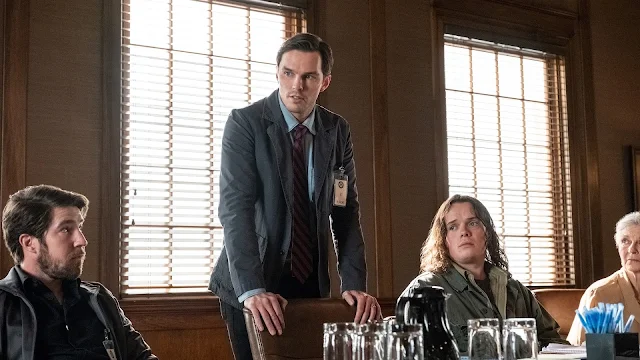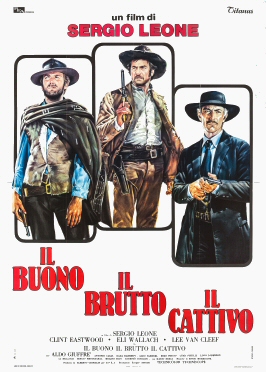Most of us didn't realize it until much later when he was an Oscar-winning director, but Clint Eastwood was a very smart man. When Sergio Leone's
A Fistful of Dollars became a hit in Italy in 1964, he asked Eastwood if he would make a sequel. Eastwood hadn't seen the movie, which hadn't yet been dubbed in English and released in the States, so Leone sent him a print of the Italian version. Even though he didn't speak Italian, Eastwood immediately recognized Leone's skill, and signed up to do the sequel. It was a gutsy move: At the time, making genre films like Westerns and sword-and-sandal epics in Italy and Spain was a job for has-beens and never-weres. Eastwood was on the brink of becoming one of the latter: His career to that point had been mostly in TV, on the long-running series
Rawhide, with a few unmemorable movies. But cultivating a persona distinct from that of
Rawhide's callow Rowdy Yates, that of the taciturn Man With No Name* of the Leone films, proved to be precisely the right thing to do. By the end of the 1960s, he had become a major star. Narratively,
For a Few Dollars More is not quite so tight as the first film -- for one reason because it lacks the well-tested framework of Akira Kurosawa's
Yojimbo (1961) that was the underpinning of
Fistful. Also, setting up a rivalry between Eastwood's character and that of Lee Van Cleef's Col. Douglas Mortimer tends to diffuse the story a bit: As in
Fistful, Eastwood's character is beaten to a pulp by the bad guys, but so is Mortimer, and the double mauling feels gratuitous, especially since there's no particular reason why the bad guys shouldn't just kill them. But the sequel shows Leone growing in style and technique, with a fine use of widescreen in establishing shots and a deft use of closeups in establishing the characters, especially the bad guys in the mob headed by El Indio (Gian Maria Volontè, who had also been the chief villain, Ramón Roja, in
Fistful). Am I the only one who suspects, from Leone's closeups of the mob's faces, that Leone had been influenced by Carl Theodor Dreyer's
The Passion of Joan of Arc (1929)? One standout in the mob is a superbly twitchy Klaus Kinski as a hunchback named Juan. The cinematography is by Massimo Dallamano. And once again, Ennio Morricone's score is integral to the film's success. The spareness of the music, scored only for a few instruments, serves as a contrast to the sweeping orchestral scores for Hollywood Westerns by composers like Dimitri Tiomkin and Max Steiner. Morricone and Leone recognized the need for silence, punctuated only occasionally by a penny-whistle tweedle or a guitar riff, to maintain the film's texture.
*Actually, he has a name in both films: In
Fistful he is called "Joe," which is obviously just a generic name for an
americano, while in the sequel he is known as Monco, the Italian word for "one-armed," in reference to his tendency to use his left hand while keeping his gun hand under his poncho.
.jpg)







